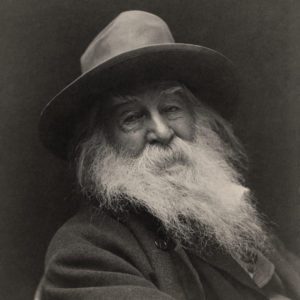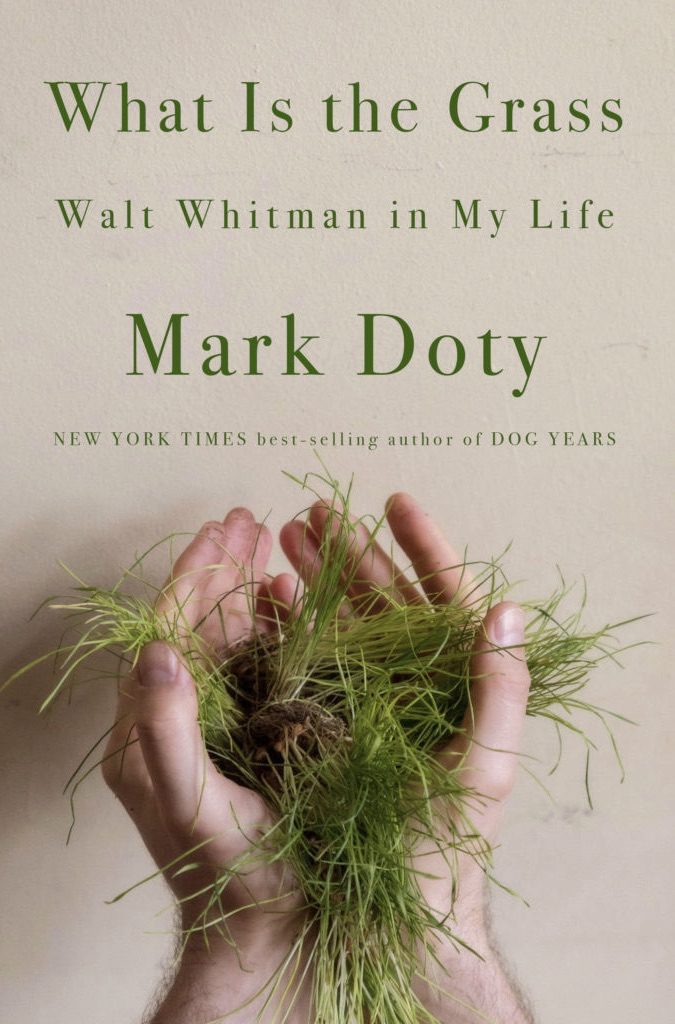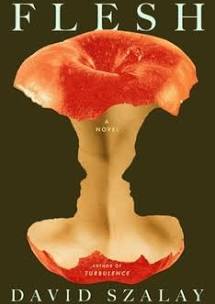
One warm, quarantine summer night this past year, I rewatched Stanley Kubrick’s The Shining (1980) with my sister. We were both startled by the ballroom bathroom scene between Jack Torrance and Delbert Grady where, between the red-and-white sinks and urinals, the two white men, one ghost and one living, trade the N-word—thoughtfully, repetitively—back and forth in reference to The Overlook Hotel’s chef, Dick Hallorann. I’d seen the movie before, but had no memory of this scene or its preoccupation with this word. That I didn’t recall it is a small example of the privilege of being a white person who is also a white reader, a white viewer, a white audience. Whiteness does not remember its own offenses, and it does not acknowledge the language of harm it routinely employs against people of color. Why? Among other reasons, it is because we were not hurt the first time we heard the speech. I was not hurt—I did not remember.
What are we to do with art—be it a novel or poem or film—that includes racial slurs and racist concepts? It seems that context will be part of the answer. We might ask: who is the author (i.e., what is their power and privilege)? What is the effect of the language? If a character speaks it, how is the character otherwise characterized by the writer/film director/artist? Is the language offering the reader any kind of recognizable critique of the language? But more importantly: does the narrative context imagine alternative ways forward through language?
These questions were on my mind as I read Mark Doty’s recent book, What Is the Grass: Walt Whitman in My Life (W. W. Norton, 2020), a text centered on a personal reading and celebration of Walt Whitman’s work and life. Let me first say that there is much to love in Doty’s text, as he weaves readings of Whitman’s poetry with reminiscences of his own life and relationships. Throughout the book, Doty provides a textured reading of Whitman’s life, work, and social world. The literary gossip is wonderful (including young Bram Stoker’s fan letter to Whitman, in which Stoker includes his “naked weight” and chest girth), and to sit with the words of an experienced poet like Doty is itself a delight. In one of my favorite chapters, “Luckier,” Doty discusses teaching “Song of Myself” from a used edition of Whitman’s Leaves of Grass, and responds to both the copy’s marginalia and Whitman’s wonder-driven querying of grass with the observation:
This presents a sweet, provocative paradox. The poet, the one you’d expect to have faith in language, knows that naming alone does nothing to dispel mystery. For him a word is a gesture in the direction of reality, and does not limit or circumscribe; the poet knows that nothing at all is settled by the word.
Doty is quick to note that his connection to Whitman’s life and work is a bond of love, and in the opening chapter describes the experience of reading and physically handling Whitman’s first editions with candor: “The hands of a man I love, dead so many years before I was ever born, have touched this page, and set these letters into type.” This framing of Doty’s love for Whitman—and the relationship of a reading lifetime—raises questions: how should we speak of what (and whom) we love when their work contains language of harm? What do we owe not only ourselves, but those harmed by the language?
I spent the first half of What Is the Grass hoping that Doty would speak to the racist stereotypes and tropes found throughout Whitman’s work. (A question I can ask myself now is: Was it for me? Did I need Doty to speak, on behalf of my anxious, white self? And now I can answer myself: yes.) In the second half of the book, my hope diminished. There seemed little room in the river of Doty’s affection for an acknowledgement of failure in Whitman’s work. This lapse felt most troubling to me at the time because What Is the Grass is a text whose style and subject will appeal to general readers, lovers of Doty and Whitman, as well as those who are new to Whitman’s work. It is an instructive book, persuasive in its affection—as praise is. To not offer a full picture of Whitman’s language is to tailor history, as Thomas Jefferson trimmed the Bible to the eighty-four pages he admired—it is to hide an intrinsic part of the text and historical person of Whitman that effects readers.
In Chapter 15—with only three chapters of the book remaining—Doty at last responds to Whitman’s racist language. One of Doty’s primary arguments for the enduring value of Whitman’s poetry throughout the book is that, in Leaves of Grass, Whitman “present[s] us with a diverse cast of characters, most of them scarce indeed in the work of the poet’s contemporaries.” In Doty’s reading, then, Whitman’s inclusivity is the generous heart of Whitman’s work, and as Whitman’s poetry “subsumes” and “absorbs” other lives in his work he serves as both “witness and advocate.” There are many readers of Whitman who readily agree with Doty, and who teach Whitman this way in high school and college classrooms. Yet there is no questioning that the agent in the center of the subsuming and absorption is a white, cis, able-bodied man, a “universalizing”1 presence whose history is steeped in settler-colonialism. For Doty, that Whitman was working-class and queer takes precedence. Doty quotes the following lines from “Song of Myself”:
______________
______________…I make appointments with all,
I will not have a single person slighted or left away,
The keptwoman and sponger and thief are hereby
_________________invited….the heavy-lipped slave is invited….the
_________________venerealee is invited,
There shall be no difference between them and the rest.
Of this passage, Doty observes, “It seems odd, for modern readers, to find the slave included in this list of those who are morally compromised or ill, but it is primarily an accounting of those who have not been able or allowed to speak. Whitman wants to listen to them, and he seeks to make of his art a banquet that feeds the despised and outcast as well as the privileged.” Yet what strikes me here is the act of othering that accompanies Whitman’s descriptions: the racist caricature of “the heavy-lipped slave,” and indeed the language of “slave” as noun or object (less that Whitman uses it and more that Doty carries the word as Whitman carries it—without question2). Doty further argues that Whitman’s is an inclusive poetics by noting his poetry’s appeal to writers of color:
Many a writer of color in the first half of the twentieth century found in Whitman a model of a white writer who embraced a wide range of humanity in his work without apparent prejudice. “Song of Myself” alone offers repeated instance [sic] in which slaves are presented empathetically: the runaway slave limpsey and weak, or the quadroon girl sold at the stand, or the older black men—woolypates—who hoe in the sugarfield while the overseer views them from his saddle.”3
Doty offers these examples to illustrate an inclusive portrayal of enslaved persons; yet, the question troubled me: how is Whitman’s perspective different from the overseer’s here? Are these lines genuinely empathetic? In their most favorable light, they read as illustrating pity, perhaps, but they read most strongly as an othering of enslaved persons, portraying the condition of their bodies as sick, young, old, and, most importantly, always in relationship to white enslavement and white power. The word “quadroon” is a racist, eugenicist term (quadroon and octaroon are always about the relationship of whiteness to “other,” about the “contamination” of white blood with Black), and Doty does not engage with this fact. This is the same critical elision I performed when I did not remember the N-word spoken in The Shining—the white reader’s mind and memory does not engage the harmful language because they are not affected.
As other writers and critics have noted, including CAConrad in their trenchant essay, “From Whitman to Walmart”4—an essay which itself contains/reproduces a racial slur even in its critique—it is Whitman’s early poetry as much as his prose “late in life” that is marked by racist stereotyping and dehumanizing language. A reader cannot segregate the language of plantation and colonial empire to one chronological point in Whitman’s life or work—it is an essential fiber that runs throughout. Once you have begun to notice it, it is hard, even impossible, to unsee the othering language that is folded into the “inclusivity” of Whitman’s poems. Yet for Doty, the racism seems to come as a surprise, rather than as part of the fabric of Whitman. “It is expecting the miraculous, I guess,” writes Doty, “to expect that any person completely escapes the racial attitude of his or her times, but nonetheless it is strange to see the poet who presents the human presences in his poems with such egalitarian warmth slipping into confused and sometimes reprehensible positions.” While Doty does address “one particularly depressing example” of Whitman’s racist language from the prose work Democratic Vistas, he softens it with the note that it is “a passage the poet later deleted.” Doty observes that Whitman’s racist language is conveyed via simile rather than outright, spoken address; it has, Doty tries to argue, a grammatical distance to it. With two sentences to go in the long paragraph, and having used tempering descriptions up until this point, Doty at last calls the example text from Whitman “a textbook example of racist speech.” This acknowledgement is late and painfully admitted. I am too aware of how white, cis, abled readers and writers routinely fail the writing community and ourselves through failures of our language, which are, in fact, failures of love, failures to extend humanity—being human—to others. We must make it routine to consider the harm of our words, which also to say: we must listen to the critiques of others, because, without listening to those we’ve harmed, white readers and writers cannot even understand how wrong we often are, and how harmful our language is, regardless of whether we live and work in predominantly white communities (which we often do).
When discussing a passage from “I Sing the Body Electric,” Doty seeks to position, and read against, the racial bias of Whitman’s language. What results is an uncritical reading of Whitman’s whiteness and the positionality of his poem’s speaker. This is interesting to me, as Whitman is infamous for having revised and republished his poetry throughout his life, and Doty would have been greatly aided in his reading if he had considered some of the changes Whitman made between the 1855 version of the poem (then untitled) and the 1856 version. In Doty’s words regarding the 1855 version: “Here the speaker observes a man, a slave up for auction, and slips into the role of an auctioneer who says to his audience of potential buyers the things they’d never want to hear.” Doty’s quotation of the poem begins:
A slave at auction!
I help the auctioneer….the sloven does not half
_______know his business.
Gentlemen look on this curious creature!
Whatever the bids of the bidders, they cannot be
______high enough for him […]5
Now consider the 1856 version, with language simultaneously more attentive to the humanity of the enslaved man (“a man’s body,” “this wonder”) and more revealing of the poem’s speaker:
A man’s body at auction,
(For before the war I often go to the slave-mart and watch the sale,)
I help the auctioneer, the sloven does not half know his business.Gentlemen look on this wonder,
Whatever the bids of the bidders they cannot be high enough for it […]
It is difficult to decide what is more troubling, that Whitman’s speaker decides to “help the auctioneer” and inhabit the role and the language of a person who is in the act of marketing and raising bids for an enslaved person, or Doty’s critical determination that here we find Whitman’s speaker, in his role of auctioneer, at his empathetic finest. Doty writes: “I’ve said that Whitman is not an ironic poet, but this passage is a splendid, cutting exception, spoken from behind the thinnest of masks, and you can’t miss the poet’s rancor, and his rage at those who think themselves so above another human being that they actually think they can buy him.” So keen is Doty to read Whitman through his love and affection, that many elements of the poem’s form go unremarked upon—the point of view of auctioneer and what power and privilege enables that point of view, the enslaved person as object, the setting and language of market (that the rhetoric of “priceless” is well within!), the enslaved person described as a “curious creature.” Also, Doty does not unpack some of the lines that could support his reading, such as when the speaker asks after the enslaved person’s passions and desires: “Do you think they are not there because they are not expressed in parlors and lecture rooms?” Here is an actual critique of whiteness and its power structures, its institutions, and it goes untouched.6 That Whitman’s own revisions of “I Sing the Body Electric” are not considered is a curious point, but, to include it, Doty would have had to confront the voyeuristic recreation of a free, white speaker found in the aside: “(For before the war I often go to the slave-mart and watch the sale).”
Instead, Doty argues, “The truth here is that Whitman managed, in poems like the one above, to see right through the racist conventions of his day, and to understand that human beings shared the same red-running blood. And he made some appallingly racist comments, in conversation and in editorials, which are indefensible.” How much better would a love song to Whitman be if the pervasiveness of his racism were addressed earlier in Doty’s book, and held and carried and remembered throughout the text? To leave it until nearly last weakens the critique and undermines the praise. But the textual examples from Whitman’s writing themselves reveal the language Doty resists engaging with, the racist caricatures that pervade Whitman’s images and shape his thoughts.
I wonder, too, why Doty attempts to dismiss the most egregious racism of Whitman’s work as being somehow most properly confined to “comments, in conversation and editorials,” when, in fact, the heart of our values plays out in our daily speech with each other as well as our published editorials. The fact that Whitman’s racism was borne out in “conversation and editorials” demonstrates both the private and the public-facing nature of Whitman’s failures—words he spoke to others casually and words he wrote for the printed news. It is only by holding Whitman accountable for all of his language that we can also love other parts of his language and poetics. The fact that Whitman is a working-class and queer poet whose use of vernacular rhythms and ordinary, anaphoric description is a model and inspiration to many readers cannot be appreciated at the cost of eliding his racist speech and images.
Or, put differently: it is possible to hold both in view. You can love Whitman’s irrepressible arias while acknowledging his limits as a poet representative of humanity. As the Earth says in his poem “Pensive on Her Dead Gazing, I Heard the Mother of All”: “let not an atom be lost.” Carry it all, as the earth carries and absorbs the dead. Set none of Whitman down. Enjoy the way Whitman looks at the bodies of his fellow men, but remember, too, that his gaze and imagination drift a colonial way—and that ours as white readers do, too.
***
Featured image: George C. Cox (1851–1903, photo), Adam Cuerden (1979-, restoration), public domain, via Wikimedia Commons.
***
1. My scare quotes.↩
2. There is a vital difference in using the noun “slave” and using the verb of “to enslave”—a verb that conveys the agency of white supremacism, and that holds white readers and writers accountable↩
3. Doty’s emphasis.↩
4. I recommend both CAConrad’s critical essay “From Whitman to Walmart” and Linda Gregerson’s “The Self in the Poem,” both available online.↩
5. Whitman, Walt., Schmidgall, Gary. Walt Whitman: Selected Poems 1855-1892. United Kingdom: St. Martin’s Publishing Group, 2000.↩
6. Thanks to Jason Myers for noting this.↩





